When raising chickens, the poultry farmer often encounters many problems that can lead to the fact that not only gains will be lost, but also to the death of the poultry population.
Diseases of broiler chickens, their treatment and symptoms are varied and without knowledge of pathophysiology and therapy, it is difficult to help. However, by observing the bird and being interested in issues of diagnosis and treatment, one can help and save the flock.
Diseases of broiler chickens
If chickens get sick, how to treat and how to help the bird can be found out only by knowing the cause of the disease.
According to the etiology of the disease can be:
- infectious (bacteria, viruses);
- invasive (helminths, protozoa);
- non-contagious or associated with defects in keeping and feeding .
In addition to the fact that diseases can cause the death of a bird, they can also be dangerous to humans. Some infectious diseases, such as salmonellosis, can be transmitted to humans.
If an infection is suspected, then the chicks will show symptoms gradually and the death will not be lightning fast, all at once. This is what distinguishes infectious diseases from poisoning.
Symptoms, treatment
salmonellosis
Broilers of younger age groups are most susceptible to the pathogen. The chicken is ill with signs of drowsiness. Chicks are inactive, lacrimation may be observed. When one broiler chicken sits and falls asleep, this does not cause concern for the poultry breeder, however, after 3-4 days, 50-60% of the livestock are sleeping. The signs are joined by the fact that the litter becomes rare and acquires a fetid odor.
Without assistance, the fall begins. The bird that survives for a long time remains the carrier of the infection. She will lag behind in growth and there will be no necessary, rapid weight gain.
Sometimes salmonella takes away very young chicks (3-4) days old. This may indicate that salmonellosis was present in the eggs prior to incubation. In this case, the incidence can be up to 90%.
It is almost impossible to buy infected young animals from a poultry farm. The breeding stock receives immunization before the selection of breeding eggs in a month. But using a home incubator, the danger is great.
To help birds, a broad-spectrum antibiotic is quickly used. Enrofloxacin, and all preparations based on it, has proved to be the best. The medicine is given instead of water. Dilution is carried out at the rate of 1 ml per liter of pure water. Pour into drinking bowls and drink for 5-6 days, daily dissolving a new dose.
pasteurellosis
This disease of chickens is very similar to salmonellosis, but diseases of the musculoskeletal system join the above listed symptoms. Broilers fall to their feet , it is difficult for them to move, they sit up, they can crawl or run with a sitting.
Pasteurella, in addition to the gastrointestinal tract, develops with pleasure on the articular surfaces of broilers, while causing arthritis. That is why signs of leg diseases appear with pasteurellosis. In addition, the bird will be inactive, ruffled, with liquefied droppings. Refusal to feed is the main sign, but thirst will be intensified.
Like salmonellosis, pasteurellosis is well treated with antibiotics based on enrofloxacin. After diluting 1 ml in a liter of water, the bird is offered a solution instead of drinking water for a week.
You can also use the following drugs:
- "Danoksan-50";
- "Flocin";
- "Colitil";
- "Tilmicon".
After 4-5 days of treatment, the symptoms disappear and the fact that the legs hurt in chickens is already becoming invisible.
collibacteriosis
This disease is caused by conditionally pathogenic microflora always present in the body. If in young farm animals this is a more frequent disease, then in broilers, collibacteriosis can occur if the immune system is greatly weakened.
As a rule, the diagnosis of collibacteriosis is made very rarely, and enrofloxacin will also help as a drug.
bird flu
This disease is caused by a virus. The bird stands with its head and wings outstretched, sometimes with its eyes closed. In this case, the poultry farmer raises the question “Why do chickens sleep standing up?”
On closer examination, swelling in the larynx, wheezing can be observed. The highly contagious disease often kills 100% of the livestock. If the virus is rampant in an older bird, then the mortality rate is within 50%.
Treatment has not been developed. However, those poultry farmers who keep a large number of livestock in order to avoid mortality should contact specialists and immunize against the disease.
Infectious bronchitis and laryngotracheitis
Both diseases are caused by a virus. Accompanied by diseases:
- cough;
- wheezing;
- depressed state;
- difficulty breathing with an open beak;
- refusal to feed;
- case within 5-33%.
Broilers at the age of 10-15 days are most often susceptible to these diseases.
Treatment methods have not been developed.
Infectious bursitis (Gumboro disease)
This viral disease, with the defeat of the bursa of Fabricius, often affects broiler chickens between the ages of 2 and 11 weeks. Death is no more than 6%. Ill birds lag behind in growth and development. A sick bird has the following symptoms:
- sudden loss of appetite;
- liquid litter;
- trembling of the limbs;
- head shaking.
This disease is often confused with salmonellosis and coccidiosis. Treatments have not been developed. At the age of one day, large incubators and poultry farms feed the chicks with the vaccine.
Newcastle disease (pseudoplague of birds)
A disease of viral origin. Chick mortality can reach 100%. Signs of morbidity are observed as follows:
- oppression;
- sagging wings;
- tilting the head back;
- twisting of the neck;
- paralysis and paresis of the limbs.
If in an adult broiler the picture can be characteristic, then the chickens get sick asymptomatically, hidden.
No cure has been developed, but flock vaccination provides excellent bird protection.
If the bird has coccidiosis
Another name for this disease is eimeriosis. It is caused by the simplest microorganisms.
Broilers aged 20-30 days are most often ill. The chickens are oppressed, fluffy, there is crowding, as if in search of warmth. Appetite is absent, thirst is increased. Diarrhea is often observed. The litter contains a large amount of blood and mucus. After some time, paresis and paralysis of the limbs can be observed.
From the onset of manifestation to the moment of death, 5-6 days pass. If the disease becomes chronic, then the ill birds have non-sterile immunity.
Coccidiosis in chickens is treated with sulfa drugs or coccidiostats. As such, you can apply:
- sulfademysin;
- sulfademitoxin;
- coccidiovit;
- kcyprodin.
Preparations are given in a mixture with feed, or individually falling asleep in the bird's mouth. The dose is calculated for 10 heads 1 tablet 0.5 g. The tablet is kneaded and the feed is sprinkled with powder, or it is poured into the mouth of the chickens. The course of treatment is 7-10 days.
Excellent results can be obtained by using Baycox . 1 ml of the product is diluted in a liter of water and the chickens are fed. The procedure is repeated after 24 hours, and then after 5 days.
Diseases associated with keeping and feeding
Broiler chickens require a very reverent attitude from the first days of life. Diseases can lead to:
- inconsistency in the temperature regime of the content;
- high humidity;
- drafts;
- crowding.
Low temperatures and high humidity lead to hypothermia of the body, which in turn will contribute to a decrease in immunity. During this period, the virulence of microorganisms will increase, and manifest symptoms:
- cough;
- wheezing;
- sneezing
- refusal to feed;
- disheveled plumage;
What to do in this case? The answer is simple - immediately bring the microclimate parameters to those that correspond to the age needs of broilers.
Overcooling, chickens cluster. At the same time, they crush each other, which can lead to death.
Feeding poor quality, rancid and moldy feed to birds can lead to mycotoxin poisoning. The poultry farmer must understand that boiling or steaming feed affected by fungi is not a panacea. At this point, the mushrooms die, but their toxins still remain effective.
Before you figure out how to treat a sick bird, you should establish the exact cause. Often, for example, diseases of the limbs in broilers are associated with a deficiency in the diet of vitamin E and D, as well as calcium and phosphorus. A broiler is a bird that gains weight quickly and has an intense metabolism. The diet of poultry should be strictly balanced in terms of proteins, fats, carbohydrates and minerals. Deviations from the diet in one indicator, pulls the imbalance. As a result, the poultry farmer receives less weight gain, and even the oats may lose the bird.

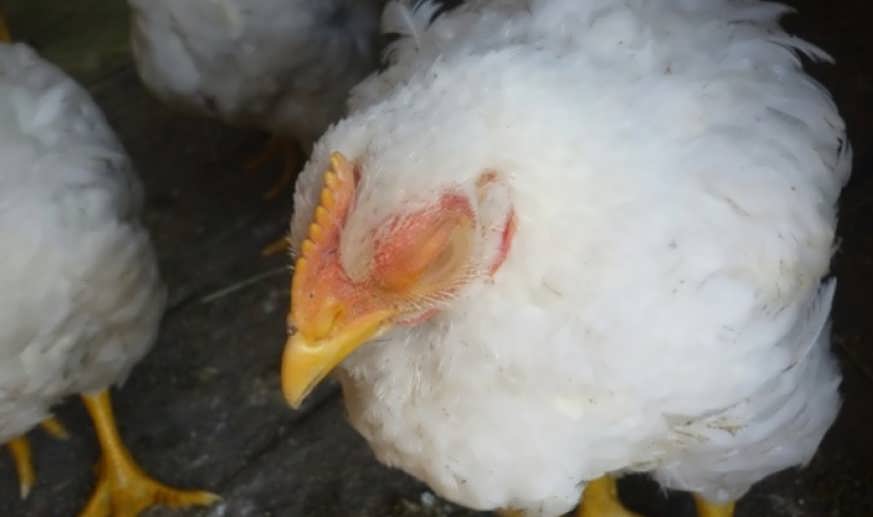
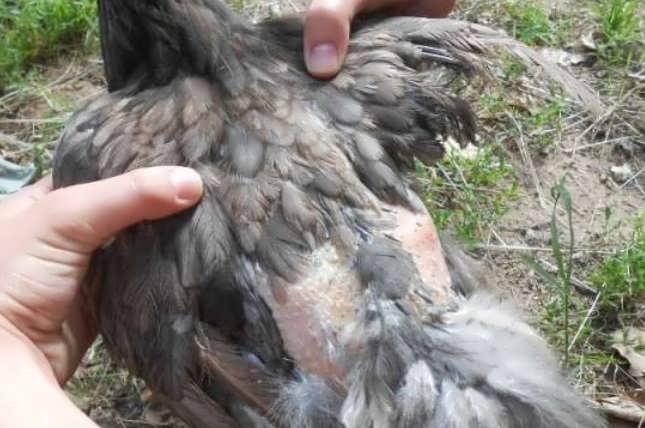
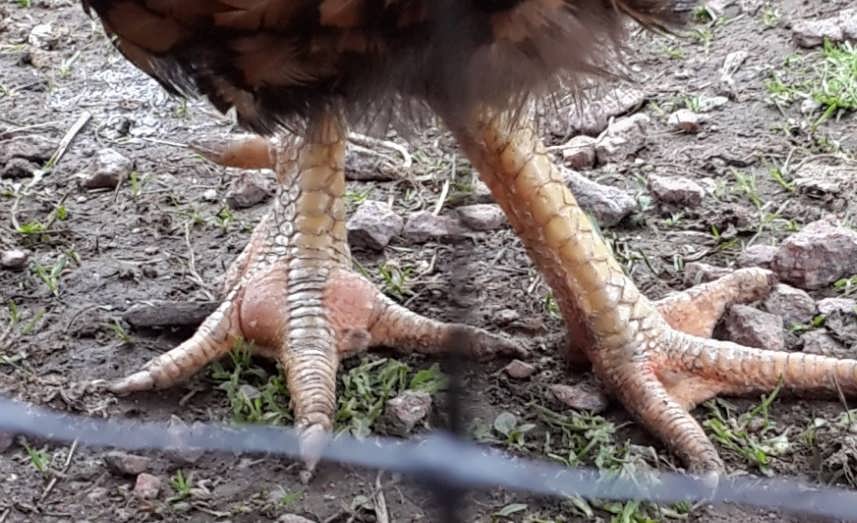

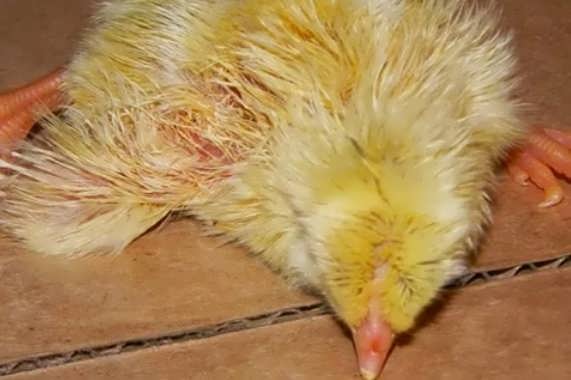
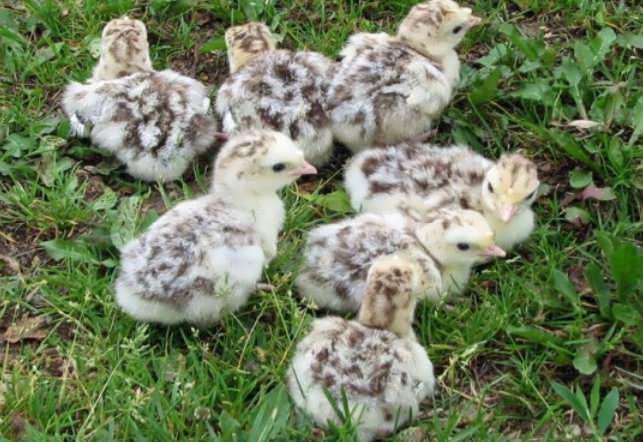
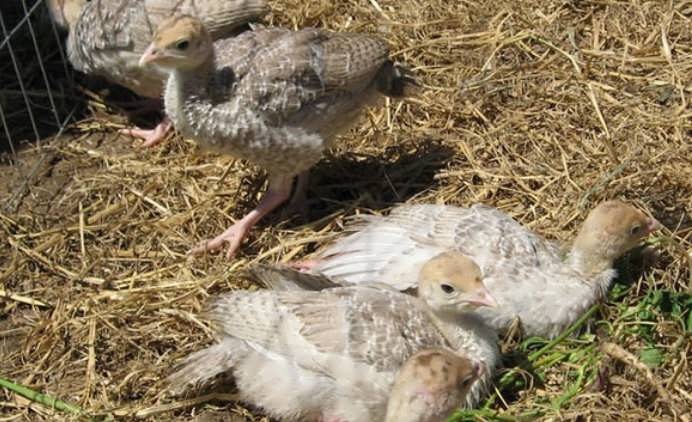
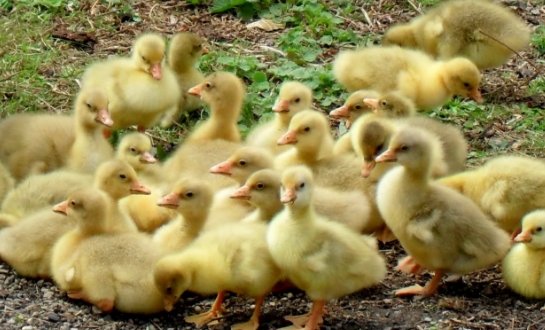
Tell us about Gumboro disease in broilers